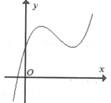Read the following passage and mark the letter A, B, C, or D on your answer sheet to indicate the correct answer to each of the questions from 28 to 35.
Deforestation is the clearing, destroying, or otherwise removal of trees through deliberate, natural or accidental means. It can occur in any area densely populated by trees and other plant life, but the majority of it is currently happening in the Amazon rainforest. The loss of trees and other vegetation can cause climate change, desertification, soil erosion, fewer crops, flooding, increased greenhouse gases in the atmosphere, and a host of problems for indigenous people.
Deforestation occurs for a number of reasons, including: farming, mostly cattle due to its quick turn around; and logging for materials and development. It has been happening for thousands of years, arguably since man began converting from hunter/gatherer to agricultural based societies, and required larger, unobstructed tracks of land to accommodate cattle, crops, and housing. It was only after the onset of the modern era that it became an epidemic.
One of the most dangerous and unsettling effects of deforestation is the loss of animal and plant species due to their loss of habitat; not only do we lose those known to us, but also those unknown, potentially an even greater loss. Seventy percent of Earth's land animals and plants live in forests, and many cannot survive the deforestation that destroys their homes. The trees of the rainforest that provide shelter for some species also provide the canopy that regulates the temperature, a necessity for many others. Its removal through deforestation would allow a more drastic temperature variation from day to night, much like a desert, which could prove fatal for current inhabitants.
In addition to the loss of habitat, the lack of trees also allows a greater amount of greenhouse gases to be released into the atmosphere. Presently, the tropical rainforests of South America are responsible for 20% of Earth's oxygen and they are disappearing at a rate of 4 hectares a decade. If these rates are not stopped and reversed, the consequences will become even more severe.
The trees also help control the level of water in the atmosphere by helping to regulate the water cycle. With fewer trees left, due to deforestation, there is less water in the air to be returned to the soil. In turn, this causes dryer soil and the inability to grow crops, an ironic twist when considered against the fact that 80% of deforestation comes from small-scale agriculture and cattle ranching.
Further effects of deforestation include soil erosion and coastal flooding, In addition to their previously mentioned roles, trees also function to retain water and topsoil, which provides the rich nutrients to sustain additional forest life. Without them, the soil erodes and washes away, causing farmers to move on and perpetuate the cycle. The barren land which is left behind in the wake of these unsustainable agricultural practices is then more susceptible to flooding, specifically in coastal regions. Coastal vegetation lessens the impact of waves and winds associated with a storm surge. Without this vegetation, coastal villages are susceptible to damaging floods.
Question 35: The paragraph following the last paragraph in the passage may probably discuss _____.
A. a number of disadvantages that deforestation puts local people at.
B. some drastic measures that should be taken to deal with deforestation.
C. the reality of deforestation in some specific countries.
D. some scientists' perspectives about deforestation.




















